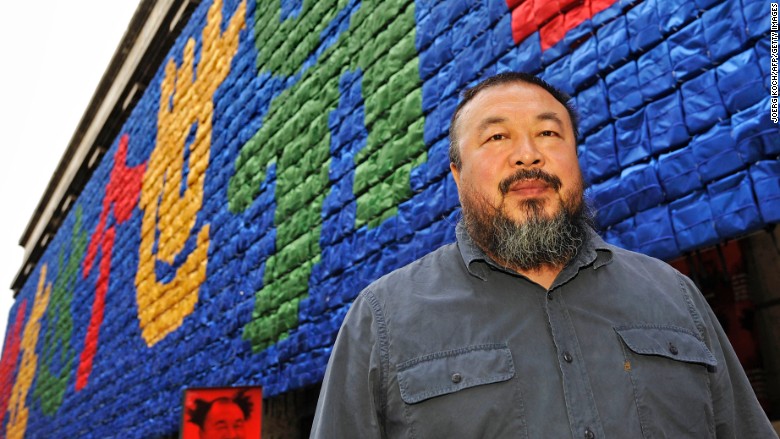The Chinese artist Ai Weiwei offers a contemporary example of protest art. Weiwei uses his art to address the corruption and humans rights abuses of the Chinese communist government. His confrontational style is informed by his experiences as an art student in New York City and his participation in protest groups in China. Beyond the plastic arts, Weiwei also uses online blogs, which are heavily restricted in China, to shed light on governmental abuses. One of his most condemnatory pieces, and the piece that most likely prompted his 2011 arrest, is his investigation of the 2008 earthquake in Sichuan. This devastating event led to the collapse of dozens of schools which killed roughly 5,000 children. In his investigation Weiwei discovered that improper materials were utilized in the construction of public schools as corrupt government officials permitted the violation of construction codes. In an act of brash defiance, Weiwei published a list of all the victims of the earthquake on his blog. His blog was subsequently shut down in 2009, but he continues to use Twitter and Instagram to advance his message.

Ai Weiwei is an world renowned cultural figure and his 2011 arrest at Beijing International Airport under allegations of “economic crimes” sparked global outcry. Under international pressure, the Chinese government released Weiwei after 81 days, charging him with tax evasion and withholding his passport for four years. Even before imprisonment Weiwei faced harassment from the state. In 2009 he suffered a severe beating from Chinese police for attempting to testify for another investigator in the Sichuan earthquake case. Weiwei had to undergo emergency brain surgery for internal bleeding as a consequence of this assault. Weiwei’s frequent confrontations with the law make his artwork truly representative of the politics of dissent. Moreover, in the age of rapid communications, his message of dissent bleeds into the international arena.

One of Ai Weiwei’s most famous political works is titled Kui Ha Zi, or Sunflower Seeds. It is presently located at Tate Modern, London. The installation consists of more than 100 million tiny, handmade porcelain sunflower seeds. More than 1,600 artisans were hired to make the porcelain seeds in Jingdzhen, a city where artists have been producing pottery for over 2000 years. The creation of this installation provided employment opportunities for many impoverished women. Moreover, Weiwei purposefully employed skilled artisans to help refute the negative connotations associated with “Made in China.” The fact that the seeds were produced in mass quantities and that they are nearly uniform in character is an allusion to cheap labor that is responsible for China’s rise in the global marketplace. The installation is meant to provoke reflection on personal consumption patterns and how this mass consumption of foreign goods affects laborers around the world. Weiwei also makes a critique of the conformity and censorship in China with the aesthetic of the installation in which the individual hand crafted seed is lost among a sea of other seeds.

Weiwei chose sunflower seeds in particular as a means by which to subvert the government propaganda he was exposed to as a child. The propaganda would present Mao Zedong as the sun and the citizens of China as sunflowers shining in their brilliance toward their leader. Weiwei undermines this government message by making the sunflower seeds a symbol of camaraderie among the Chinese people in opposition to the oppressive government. The 100 million carefully crafted sunflower seeds are arranged at Tate Modern in a neat rectangle, covering the entire floor of a spacious room. Initially, and as Ai Weiwei originally intended, viewers were allowed to interact with the installation by walking over the porcelain seeds. However, the museum suspended this practice a week after the release due to safety concerns. Nonetheless, viewers are still awed by the powerful social message of Kui Hua Zi.

It is incredible to hear the amount of detail and effort that went into this piece. It has so much meaning to it, and without the dedication it would not have the same effect. I love that you bring in such unique pieces, I have never heard about this and was fascinated to learn. It is awesome how brave his is to stand up to his government for what he believes in.
I like how you focused on a single artist for your last post. It provided a different lens than any of your previous posts. I have learned about this piece before, but it always awesome to hear others’ description of it as well.
I have to say this post was the best to leave for last. At personally I did not know much about it at all and it fascinated me. To know how ancient some of these cultures are is really interesting. For example what you mentioned about the city of Jingdzhen producing pottery for over 2000 years is absolutely incredible.